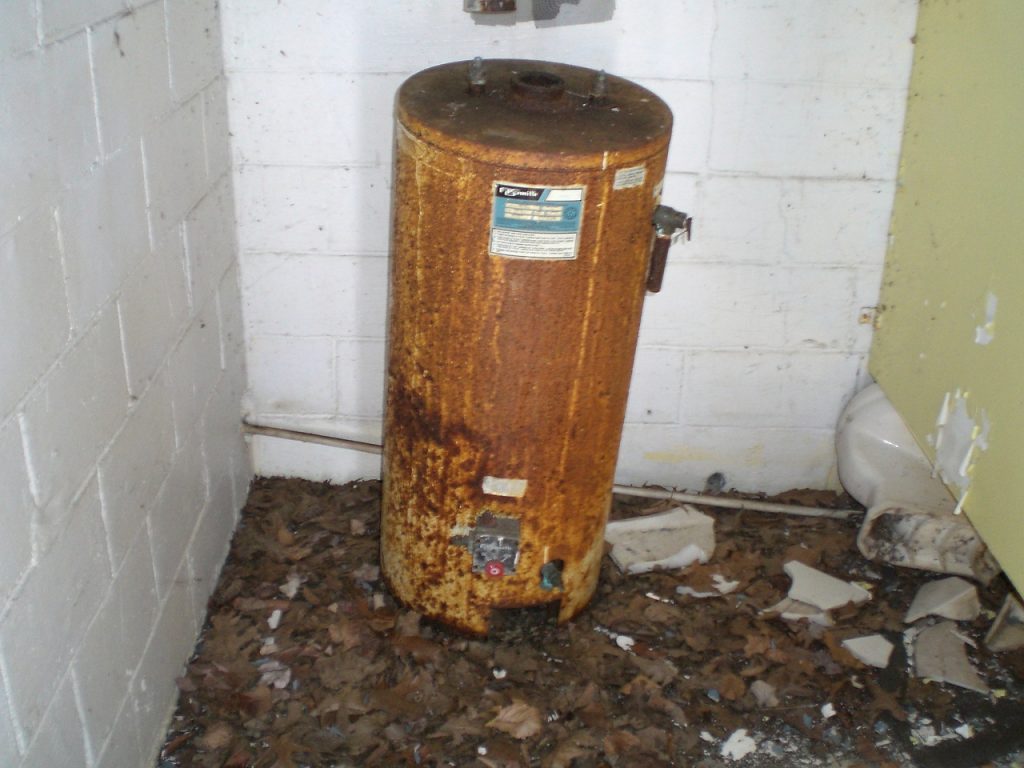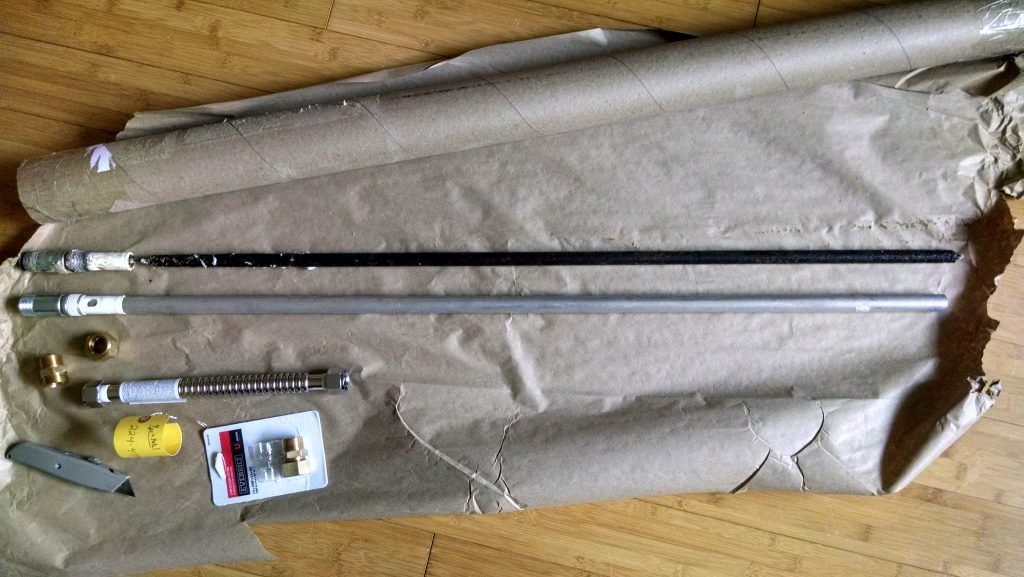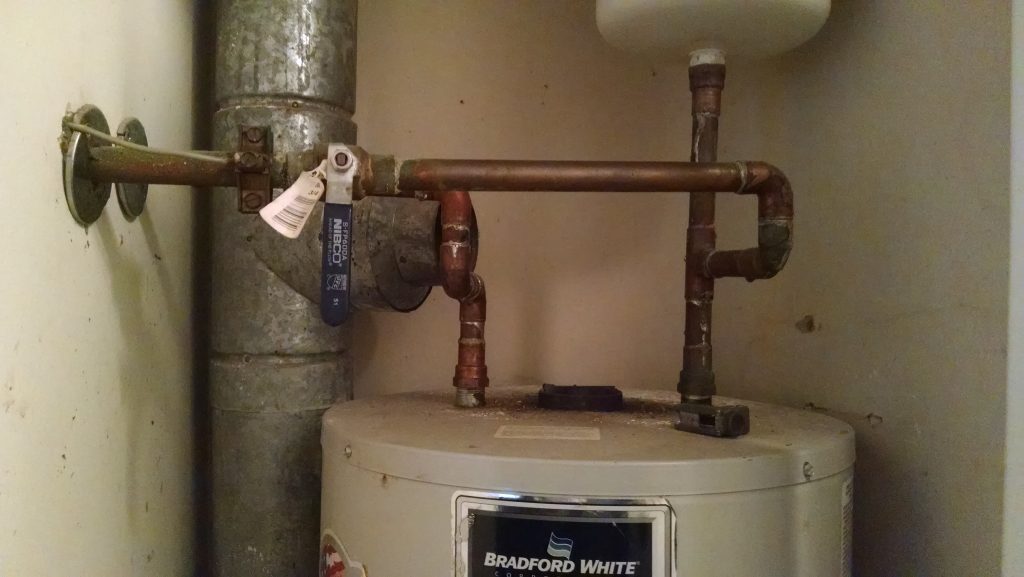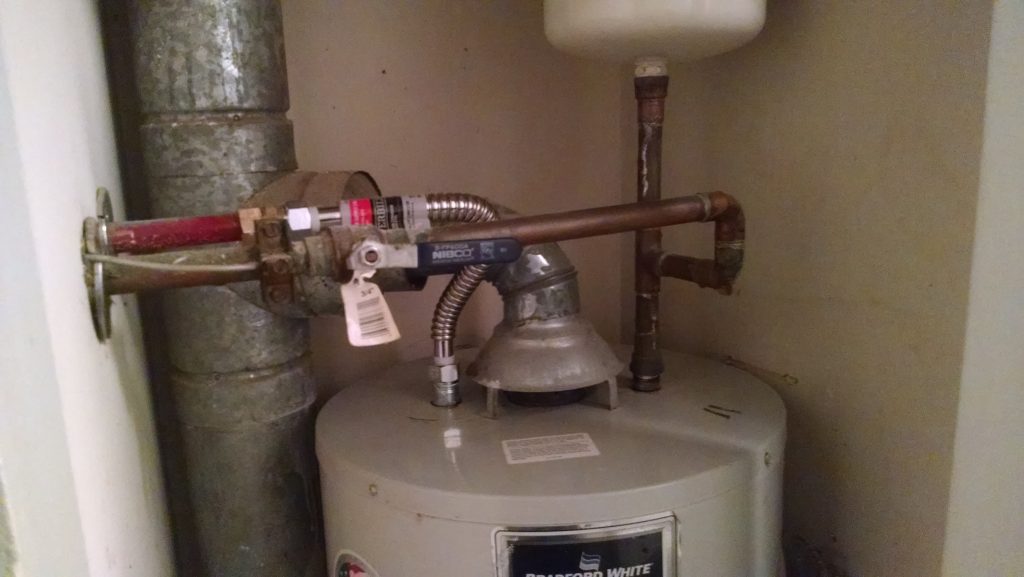
Your water heater is one of the most neglected appliances in your home. It sits hidden away in the basement, attic, or closet somewhere where no one pays a single second of attention to it as long as there is hot water when you turn on the faucet. That is until one day when it springs a leak and it turns into a major event.
Most water heaters are made of steel with glass or porcelain-lined tanks. When you combine water with metal, it will form rust. To protect your water heater from corrosion, a long metal rod called a sacrificial anode rod is used. The idea is the anode rod corrodes first, sacrificing itself to protect the steel tank. Once the anode rod is gone, the tank begins to corrode, until it eventually leaks and a replacement is needed.
When you go to the local home improvement store or plumbing supply company, you will find water heaters being sold with 6-year to 12-year warranties. The only difference between the two is for the 12-year model, you will be paying a few hundred dollars extra for a beefier or second anode rod in the tank.
It is said that a 6-year warranty water heater will usually come with a .75 inch diameter anode; a 9-year water heater has a .84 inch anode, and a 12-year heater has a .90 inch or multiple .75 inch anode rods.
With a 6-year warranty water heater, you will want to check and possibly replace the anode rod after approximately three to five years of service. Water softeners, hard water, acidic water, and how often you use the hot water can speed up corrosion. Once the damage to the tank has started, there is no way to reverse it.
By replacing your anode rod, you can significantly extend the life of your water heater and also save a bunch of money.
Table of Contents
Types of Anode Rod Metals
Anode rods are made of magnesium, aluminum, or aluminum/zinc alloy.
Aluminum anode rods are preferred for areas with hard water or well water. Aluminum rods are often found in older tanks and are expected to take longer to corrode. Downsides with aluminum is that people believe that having this element in the water supply has negative health effects. Aluminum rods may also swell, making them harder to take out for inspection and replacement. They could also break apart and sink to the bottom of the tank, causing sludge build-up that reduces the efficiency of the water heater.
Magnesium anode rods tend to corrode faster than other types of anode rods due to producing a higher current in the electrolysis process. Magnesium rods will also corrode faster due to hard water content and requiring more frequent replacement. Magnesium may also react with bacteria in the water, causing a sulfur or rotten egg smell. The upside is magnesium in the water supply is thought to have better health benefits.
For homeowners who experience a rotten egg odor in their hot water, replacing the rod with an aluminum/zinc anode will usually control the problem.
How To Replace Your Anode Rod
To extend the life of your water heater, all you need to do is check and replace your anode rod regularly. An anode rod is about $30 and is much less expensive to replace than your water heater.
We recently replaced our anode rod in our Bradford White gas water heater and here is what I learned and some tips on how to replace yours too.
The very first thing to do to replace your anode rod is to find out what kind your water heater uses. Some models of water heaters have a separate anode rod port with a hexagonal head that is located at the top of the tank. If you do not see one visible, it might be hidden under the top cover. Other water heaters designs might have the anode rod connected to the hot water outlet nipple, which makes replacement much more involved if your water pipes are hard-soldered on. Check the owner’s manual if you are unsure. If you are super lucky, you might have a newer plastic water tank that doesn’t have a sacrificial rod that needs replacing.
I ended up going to SupplyHouse.com and purchasing a magnesium anode rod for $29.40 shipped. You also have the option of checking Home Depot or Lowes. I purchased online since I needed one with a hot water outlet nipple and this was the exact model number listed in the owner’s manual. Their site had the lowest shipping cost of all the sites I looked at.
Now gather up all the tools and materials you’ll need.
Required Tools and Materials For This Project
- Anode rod
- 1-1/16″ socket and socket wrench or breaker bar (for hex anode)
- Pipe wrench (for hot water outlet anode)
- Teflon thread sealing tape or thread sealing compound
- Cheater bar or a long pipe for extra oomph
- Bucket or garden hose
Optional Tools and Materials
- 3/4″ x 3/4″ brass compression fitting
- 3/4″ FIP x 3/4″ FIP corrugated water connector
- Copper pipe cutter
- Adjustable wrenches
Step 1 – Turn Off Water
Turn off the cold water shutoff valve. Otherwise you will enter up with water shooting straight up out from your water heater when the anode is removed.
Step 2 – Turn Off Electricity or Gas
Turn off the electricity or gas to the water heater. For an electric heater, flip the circuit breaker. For a gas heater, you can turn it down to the pilot setting if you do not wish to relight the pilot afterwards.
Step 3 – Open A Hot Water Faucet
Open a hot water faucet near the water heater so air can enter the hot water supply lines
Step 4 – Drain Out A Bit of Water
Either connect the garden hose to the drain valve on the bottom of the water heat or use a bucket to drain out some of the water in the heater and reduce the water pressure in the tank.
Do not drain out too much – just enough to where the water is below the anode rod port if it is on the side of the water heater or 1/2 gallon if the port is at the top of the heater. You will want the weight of the remaining water to keep the water heater stationary when you attempt to unscrew the anode rod.
In our case, we used the water pressure relief valve to drain some of the water. Might as well test if the valve is working correctly while we are at it…
Step 5 – Loosen Anode Rod
Use the socket wrench on the hex head to loosen the anode rod.
If the anode rod is in the hot water supply line, you will need to use the pipe wrench to loosen the anode rod. First unscrew the water line from the top of the outlet. Then place the wrench on the smooth area at the bottom of the nipple beneath the threads and not on the threads.
You might need to use the cheater bar and a second person to keep the water heater from moving if it is really stuck. If you have an impact wrench handy, you can use that too. You should avoid using any penetrating oils such as PB Blaster on the threads to avoid contaminating the water supply.
Step 6 – Inspect Anode Rod
Pull out the old anode rod if it needs to be replaced. Signs that an anode needs to be replaced is if the internal steel wire core is exposed, there is significant corrosion which looks like the rod has been chewed on, it is covered in white calcium deposits, or if there is no reduction in size from last inspection.
If there is not enough overhead clearance, you can bend or cut the old rod as you remove it. For locations without enough clearance, you can find flexible, segmented replacement anode rods online or at the home improvement stores. In my case, since the water heater was located in an upstairs hall closet, we cut a small hole in the ceiling into the attic.

Step 7 – Apply Thread Tape
Apply Teflon thread tape or thread sealing compound onto the threads of the new rod if it is not already applied. If using PTFE thread sealing tape, apply it in clockwise direction.
Step 8 – Install New Anode Rod
Insert and tighten the new anode rod.
Step 9 – Turn Back On Water
Turn on the cold water supply. Check for leaks. Finally, turn back on the gas or electricity. For future reference, I taped a note with the date of replacement to the water heater.
Hot Water Outlet Anode Extra Considerations
In our case, we had hard plumbing lines connected to the anode’s nipple instead of a flexible line. This meant we needed to cut the copper pipe to be able to unscrew the water line from the nipple.
We replaced the section of copper pipe with a stainless steel corrugated flexible supply line using a brass compression fitting, which requires no soldering. This means for future anode rod replacements it will much quicker by simply unscrewing the flex line from the nipple. I choose a corrugated connector over a stainless steel braided line since while the braided ones are more flexible, the insides are likely to be rubber tubing which is more likely to burst over time.
To install the brass compression fitting, you will want to use sandpaper to sand down the copper pipe to remove any dings, scratches, or gouges that might prevent the connection from sealing tightly. Then slide the nut, compression sleeve, followed by the body of the compression fitting onto the pipe. Gradually tighten the nut with a wrench while holding the body of the fitting steady with a second wrench until there are no leaks.
Closing $ense
According to HomeAdvisor, the typical cost to replace a water heater ranges from $752 to $1,391.
By spending less than an hour every three to five years checking and replacing the anode rod before it gets eaten away by corrosion, you can extend the life of your water heater by years.
Not only will neglecting to perform regular maintenance on your water heater cause it to rust faster, the rust will flake off and settle on the bottom of the tank. This creates an additional layer between the flame and the water, making your water heater burn more gas to heat the water. The thicker the sediment, the more inefficient your heater. Eventually you will have such a large pile of rust, the inflow of cold water will cause it to swirl around the tank and come out through your hot water pipes, clogging your faucets and shower heads, not to mention you showering with that water.
Hopefully with this post, you will spend less money on plumbers and more time enjoying those hot showers.
How old is your water heater? When was the last time you checked and changed your anode rod?


